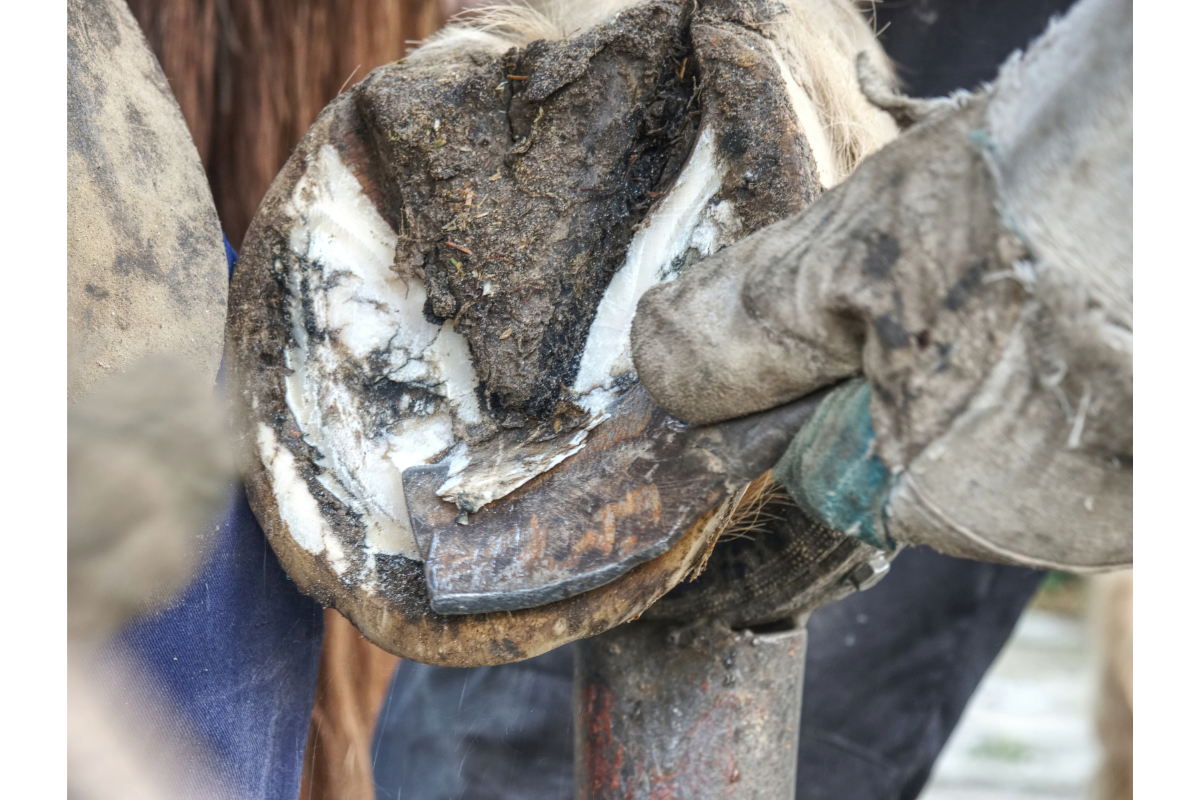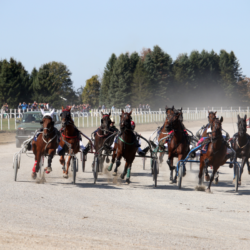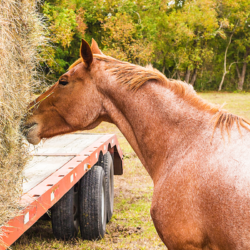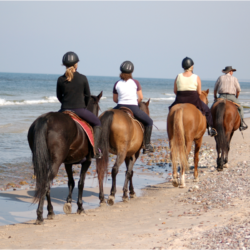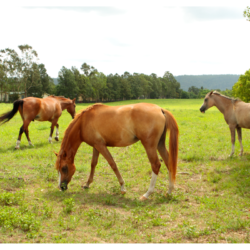The health of horses’ hooves is crucial to their general well-being and performance. Among the common ailments, white line disease represents a particular challenge. This condition is characterised by a detachment of the foot wall, creating a favourable environment for infection.
What causes this condition?
White line disease in horses is mainly due to a disjunction in the wall of the foot. This separation creates a cavity between the horn and the fleshy foot, which becomes a breeding ground for bacteria and fungi. Moisture plays a crucial role, encouraging the development of these pathogenic micro-organisms.
Anaerobic bacteria such as Fusobacterium necrophorum thrive in oxygen-free environments. Their metabolic activity produces toxins that necrotize hoof tissue. Fungi, particularly of the Candida genus, exacerbate the inflammation. The horse’s immune response, triggered by this microbiological aggression, causes a painful inflammatory reaction.
Cracks, wounds and other potential entry points serve as gateways for these pathogens. The breakdown of keratin, the main protein in the hoof’s horny tissues, is facilitated by enzymes produced by these bacteria. This weakens the hoof structure, making the horn crumbly and brittle.
The accumulation of infected material in the cavity formed by the ant farm exerts pressure on the surrounding tissues, aggravating the inflammation and allowing the infection to progress to the deeper structures of the hoof, and even the bone in some cases.
What are the symptoms of an anteater?
Symptoms of anthrax in horses can be subtle and difficult to detect without careful examination. In general, this condition does not cause lameness, which makes early detection problematic. It is often discovered during trimming or shoeing, when the hoof horn appears to be thinning, less resistant and looking like wet chalk.
One of the distinctive signs is the widening of the hoof’s white line. This abnormal separation between the hoof wall and the sole is visible when the white line is examined, revealing a space conducive to the growth of bacteria and fungi. X-rays can be useful in locating the area of infection and its extent.
Although anteaters do not usually cause lameness, extensive infection can cause lameness, under-performance and even immobilisation in athletic horses. Recognising the early signs of this disease is crucial to early intervention.
Abscesses associated with anteaters tend not to stay under the sole but to move up the white line and break through to the crown. Extensive anthrax can also cause pain when a horse walks on hard or uneven surfaces.
How is the condition diagnosed?
Diagnosis of anteaters requires a combination of methods to correctly assess the extent of the disease. A thorough examination of the foot by a vet or farrier is essential. This examination will enable the disjunction of the wall to be assessed and any infection present to be identified.
X-rays play a crucial role in the diagnosis of an anteater. They provide a precise view of the internal structures of the hoof. They help to locate cavities and abnormal spaces hollowed out by pathogens. X-rays can also be used to monitor the progress of the disease and assess the effectiveness of treatments.
The specific nature of the hoof environment makes it difficult to detect an ant farm. The absence of lameness in the early stages of the disease further complicates diagnosis. However, regular care, trimming and shoeing provide opportunities to inspect hooves closely and detect abnormalities.
Regular trimming or shoeing allows the farrier to detect early signs of hoof disease, such as wall detachment, widening of the white line, and crumbly horn. The use of X-rays helps to confirm the diagnosis by visualising the internal structures affected by the disease.
What treatments are available?
Ant farm treatment involves several crucial steps to eliminate the infection and prevent recurrence. Thorough cleaning of the infected cavity is the first step. This involves removing all infected material, followed by the application of an antiseptic treatment to eradicate any remaining bacteria and fungi.
In some cases, antibiotics or antifungals may be prescribed to combat the infection. These treatments are often administered orally or by injection, depending on the nature of the pathogens identified. It is essential to follow your vet’s recommendations to ensure maximum effectiveness.
Once the infection has been treated, preventive measures must be taken to avoid recurrence. This includes proper foot care, such as regular trimming and the application of specific products to strengthen the horn. Maintaining rigorous hygiene in the horse’s environment, avoiding muddy or damp ground, is also crucial.
The use of non-occlusive sanitising products is recommended to allow the hoof tissues to breathe properly while offering protection against anaerobic bacteria. Products to strengthen the horn and thicken the sole of the hoof are also essential to improve horn resistance and prevent future infections.
What are the natural alternatives?
For those who prefer natural alternatives to conventional medical treatments, a number of options exist for managing and preventing hoof ant in horses. A regular hoof care routine is essential, including daily cleaning and the application of fortifying products.
Using products such as betadine for its local antiseptic properties, and bactericidal and fungicidal disinfectants, can help to treat and cure the infection. A course of biotin can stimulate the regrowth of healthy horn, essential for evacuating the cavity created by the ant farm.
Applying cleansing treatments based on vegetable oils, beehive products and essential oils with therapeutic properties, such as thyme, tea tree and bay laurel, can be particularly beneficial. These natural products offer antibacterial and antifungal properties without the potential side-effects of powerful chemical disinfectants.
The use of care shoes protects the hoof and sole from the ingress of foreign bodies. In addition to these treatments, particular attention should be paid to strengthening the horn and promoting keratin growth . Biotin can be used to achieve this. A balanced diet and the use of specific products are essential to encourage healthy growth.
What are the means of prevention?
Ant farm prevention is based on good foot hygiene and regular maintenance. Daily hoof cleaning to remove debris, dirt and excess moisture is the first step. This helps to reduce the conditions favourable to the development of bacteria and fungi.
Proper trimming by a qualified farrier or chiropodist is essential to maintain hoof health. Poor trimming can create inappropriate pressure, leading to cracks and seams. This opens the door to micro-organisms.
Maintaining a clean stall and managing the pasture properly also help to create an environment that is unfavourable to the development of anthills. A clean stall reduces excessive humidity, a condition conducive to infection. Ensuring good drainage in the horse’s environment is crucial to prevent the build-up of stagnant water.
Finally, the use of care products to strengthen the hoof horn and prevent cracking is recommended. A regular hoof care routine and meticulous hoof inspection help to detect and treat the first signs of problems early. This reduces the risk of ants developing.

